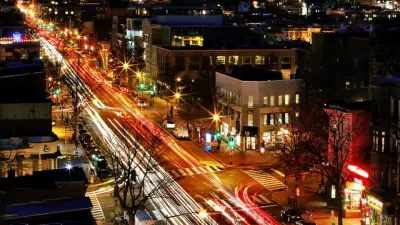Author Russell Shorto claims that "the willingness of Europeans to follow top-down social planning" makes public transit and bicycling more feasible in European cities than they are in the States where people don't always agree with technocrats.
According to Shorto, factors like geography, public policy, and the collective mindset of people in society contribute to the resounding success of the Amsterdam model.
On the first point, "America is spread out, while European cities predate the car," writes Shorto in The New York Times Op-Ed. Secondly, Dutch laws mandate that children pass the bicycle safety exam, make it costly for people to obtain a driver's license, and deliberately keep cab fares high. "[A] trip from the airport may cost $80 [on a taxi], while a 20-minute bus ride sets you back about $3.50," he points out. Then there's the general perception of cars. Buses in Holland aren't the last resort for mobility just as cycling isn't a green alternative to cars. "[I]t's a way to get around," Shorto says.
His conclusion? "For American cities to think outside the car would seem to require a mental sea change."
Russell Shorto is the author of "The Island at the Center of the World."
FULL STORY: The Dutch Way: Bicycles and Fresh Bread

Planetizen Federal Action Tracker
A weekly monitor of how Trump’s orders and actions are impacting planners and planning in America.

Restaurant Patios Were a Pandemic Win — Why Were They so Hard to Keep?
Social distancing requirements and changes in travel patterns prompted cities to pilot new uses for street and sidewalk space. Then it got complicated.

Map: Where Senate Republicans Want to Sell Your Public Lands
For public land advocates, the Senate Republicans’ proposal to sell millions of acres of public land in the West is “the biggest fight of their careers.”

Orange County, Florida Adopts Largest US “Sprawl Repair” Code
The ‘Orange Code’ seeks to rectify decades of sprawl-inducing, car-oriented development.

Maui's Vacation Rental Debate Turns Ugly
Verbal attacks, misinformation campaigns and fistfights plague a high-stakes debate to convert thousands of vacation rentals into long-term housing.

San Francisco Suspends Traffic Calming Amidst Record Deaths
Citing “a challenging fiscal landscape,” the city will cease the program on the heels of 42 traffic deaths, including 24 pedestrians.
Urban Design for Planners 1: Software Tools
This six-course series explores essential urban design concepts using open source software and equips planners with the tools they need to participate fully in the urban design process.
Planning for Universal Design
Learn the tools for implementing Universal Design in planning regulations.
Heyer Gruel & Associates PA
JM Goldson LLC
Custer County Colorado
City of Camden Redevelopment Agency
City of Astoria
Transportation Research & Education Center (TREC) at Portland State University
Camden Redevelopment Agency
City of Claremont
Municipality of Princeton (NJ)




























